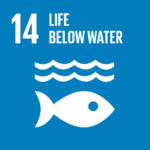El Niño is returning.Impacts include bleached corals, widespread harmful algal blooms, decimated seaweeds and increased marine mammal strandings.
El Niño Poised to Return After Four Years of Absence, Experts Warn. In a major development that could have far-reaching impacts on the planet’s climate system, El Niño is expected to return to the equatorial Pacific Ocean in July after a hiatus of almost four years.
RELEVANT SUSTAINABLE GOALS



El Niño Poised to Return After Four Years of Absence
El Niño is one of the two opposing phases of the El Niño-Southern Oscillation (ENSO) climatic cycle. Unlike its counterpart La Niña, which is characterized by a cooling of the ocean’s surface, El Niño is marked by a warming of the same region, stretching about 6,000 miles (roughly 10,000 kilometers) westward from Ecuador.
During El Niño, ocean temperatures can rise by 2 to 4 degrees Fahrenheit (about 1 to 2 degrees Celsius) for several months, triggering a chain reaction of climate events across the globe. From altered rainfall and temperature patterns to changes in wind behavior, the impact of El Niño is immense and far-reaching.
As forecast models suggest, the upcoming El Niño could be particularly potent, given that it follows three years of the La Niña pattern, which typically lowers global temperatures slightly. The weakening of winds along the equatorial Pacific Ocean and the accumulation of heat beneath the ocean’s surface only add to the likelihood of El Niño’s resurgence.
El Niño and Possible Record Temperatures
Climate scientists have issued a warning about the impending return of El Niño, a weather pattern associated with record-breaking temperatures and other extreme weather events. During El Niño, winds along the equator slow down, pushing warm water eastward and creating warmer ocean surface temperatures.
“El Nino is normally associated with record breaking temperatures at the global level. Whether this will happen in 2023 or 2024 is not yet known, but it is, I think, more likely than not,” said Carlo Buontempo, director of the EU’s Copernicus Climate Change Service.
EU Copernicus scientists published a report on Thursday assessing the climate extremes the world experienced last year, its fifth-warmest year on record.
Europe experienced its hottest summer on record in 2022, while climate change-fuelled extreme rain caused disastrous flooding in Pakistan, and in February, Antarctic sea ice levels hit a record low.
The world’s average global temperature is now 1.2C higher than in pre-industrial times, Copernicus said.
Despite most of the world’s major emitters pledging to eventually slash their net emissions to zero, global CO2 emissions last year continued to rise.
While El Niño’s impact on global climate cannot be overstated, the warming of the Pacific Ocean could also lead to the destruction of marine life, particularly fish and corals. Scientists have warned that the record-high ocean temperatures could spell disaster for these delicate ecosystems.
The return of El Niño is a reminder that climate change is a complex and ever-evolving phenomenon that requires urgent action from governments, businesses, and individuals alike. As we brace ourselves for the potentially catastrophic effects of El Niño, it’s imperative that we take steps to mitigate the impact of climate change and build a more sustainable future for ourselves and future generations.
You may also be interested in :
Unexplained Whale Strandings In Bali Raise Concerns Over Plastic Pollution and Natural Traps


